Now that the eggs are hatching at University of Pittsburgh, we have two sets of hungry baby peregrines — Pitt and Gulf.
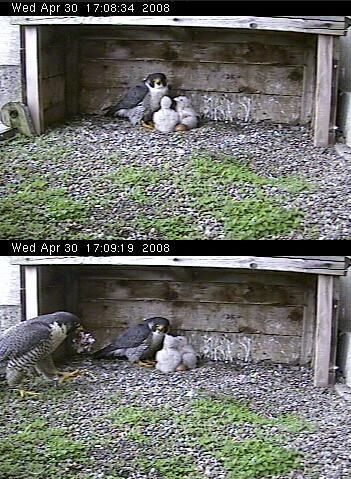
At Gulf Tower, Tasha stopped brooding the chicks long enough for Barbara Simon to capture two good photos.
In the first picture, you can see the two unhatched eggs on the gravel next to the two chicks. The chicks certainly have grown! These two eggs will not hatch at this point and will eventually be moved aside by the adult birds.
In the second picture, Louie brings food for the family. He will tear it into tiny pieces and drop it into the chick’s mouths.
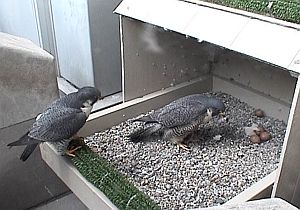
Above, E2 watches from the perch while Dorothy brings food to their first chick. Watch the slideshow below to see them interact with their first nestling of 2008.
You can watch both webcams at the National Aviary website.
For more of my peregrine blogs, click here.
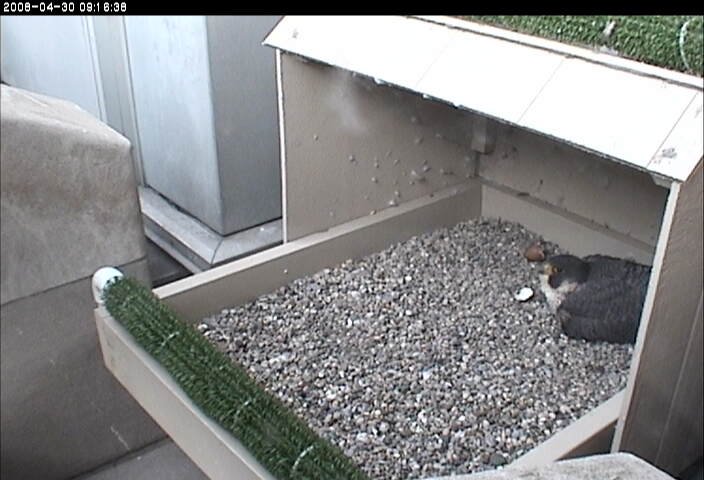
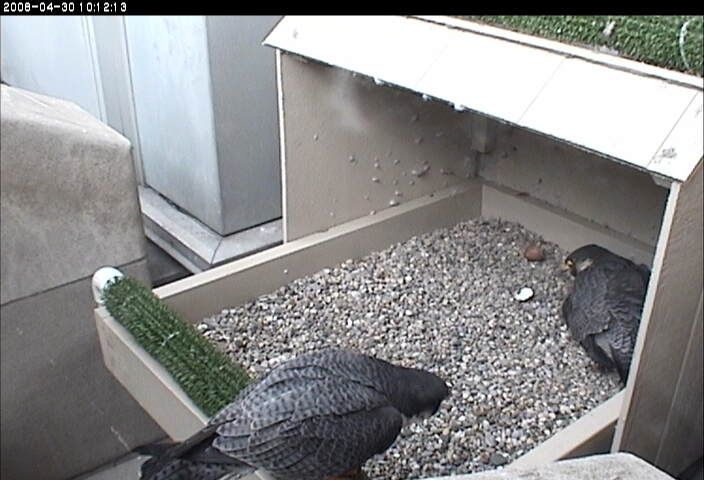
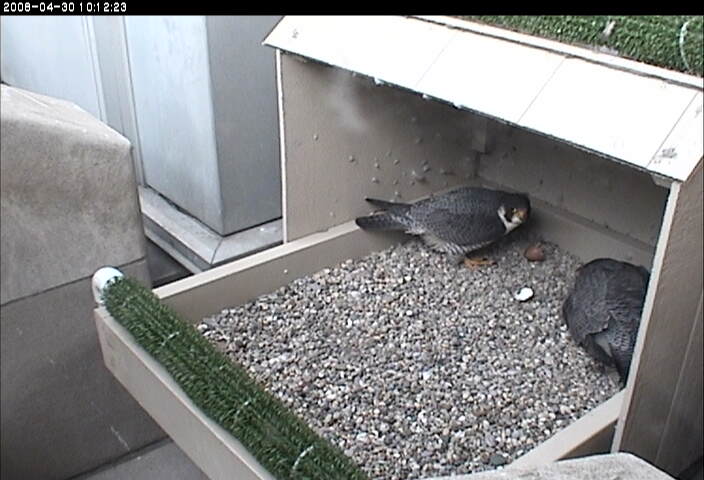
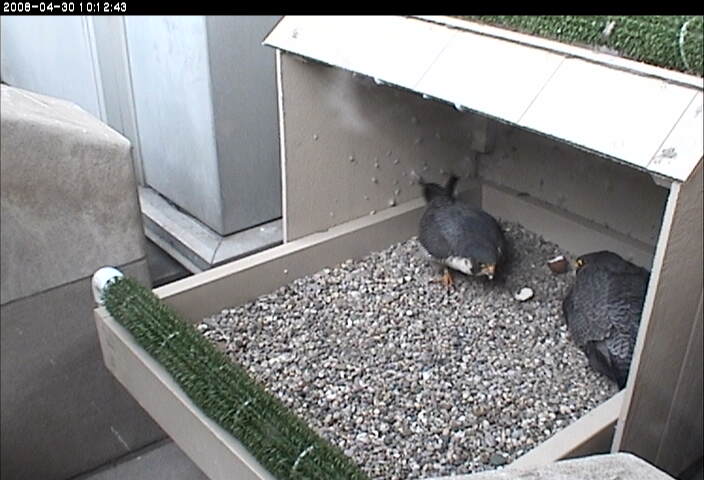
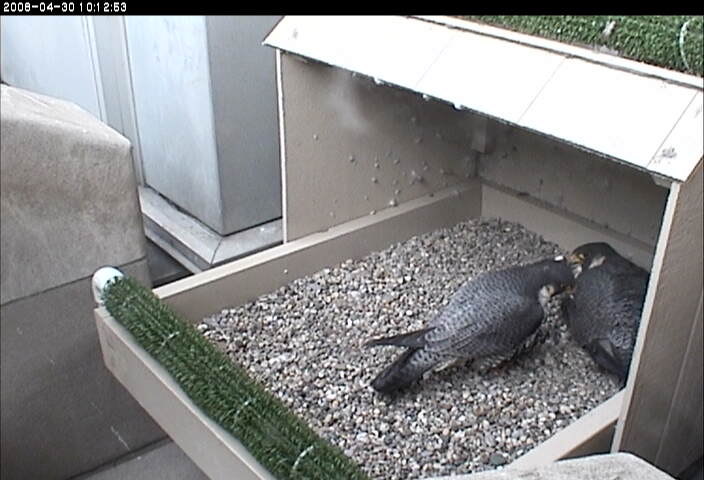
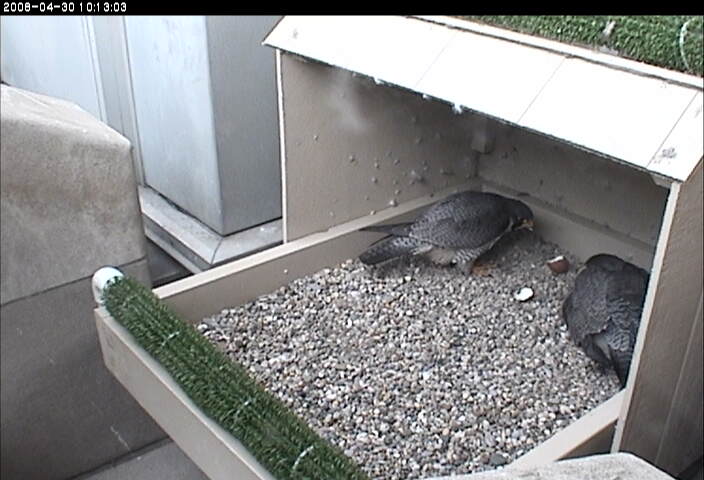
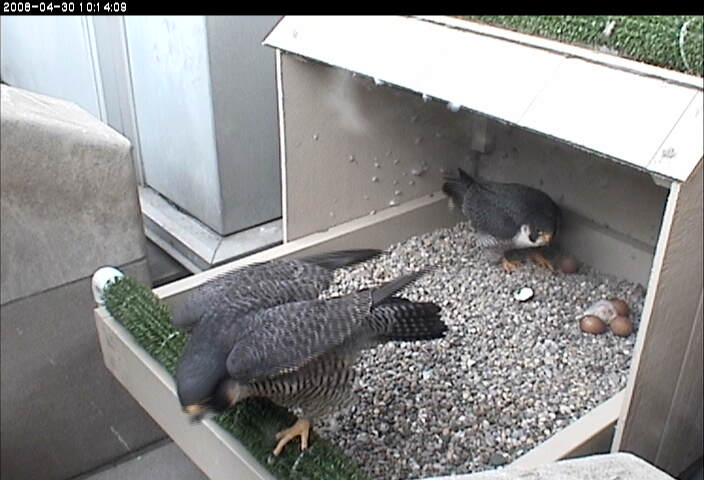
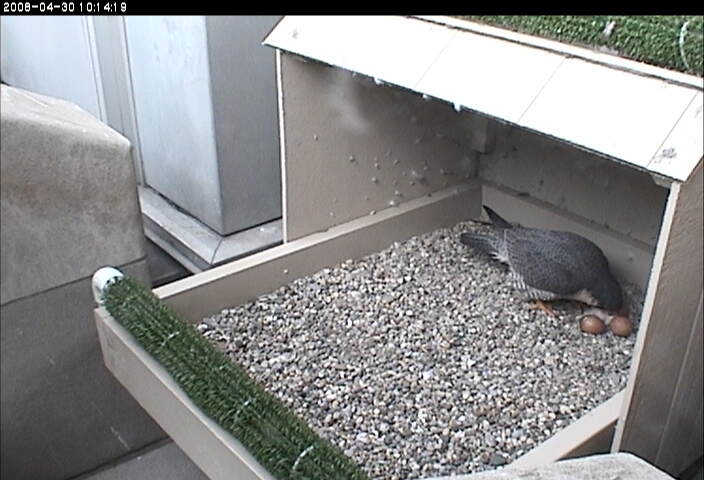
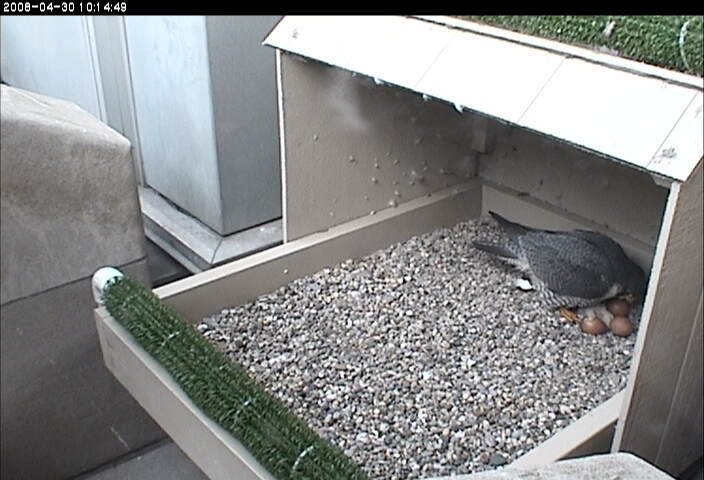

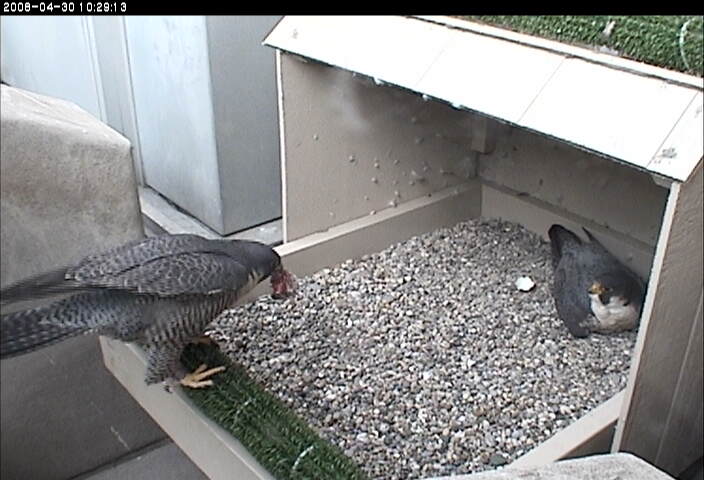
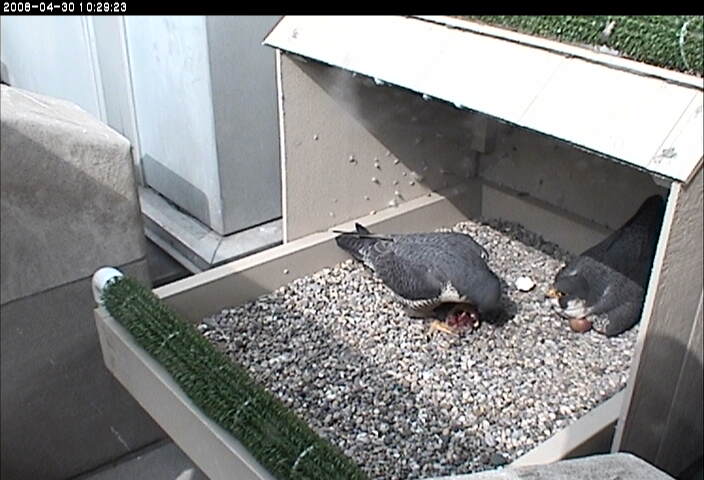
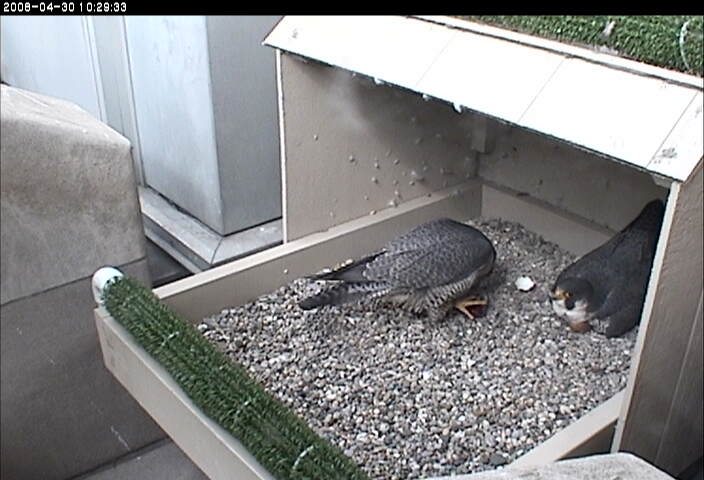

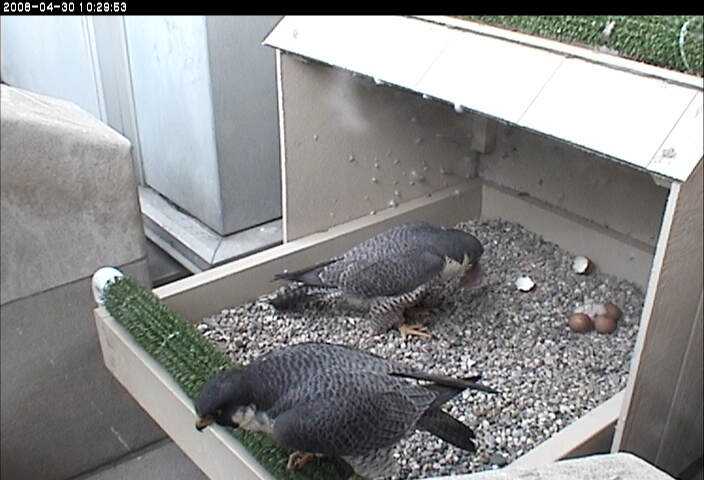
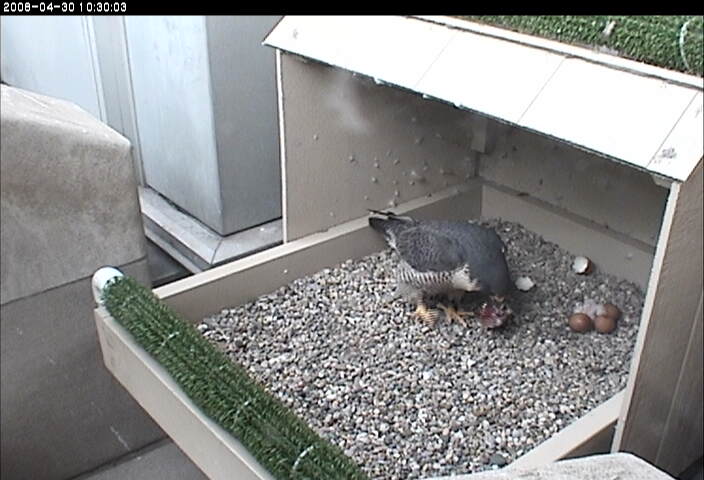
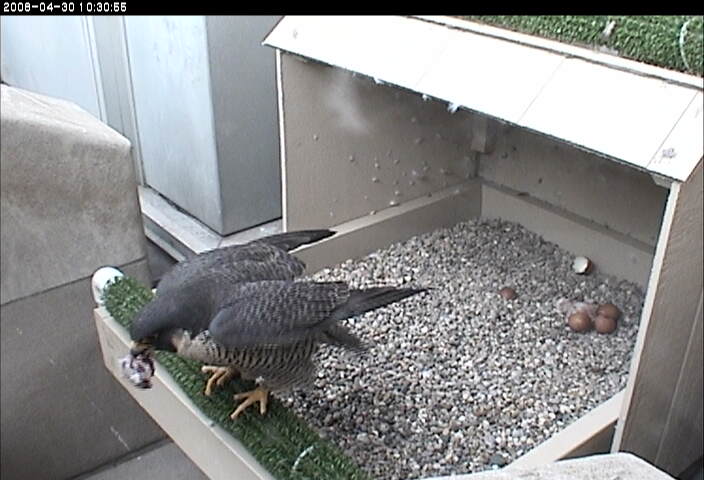
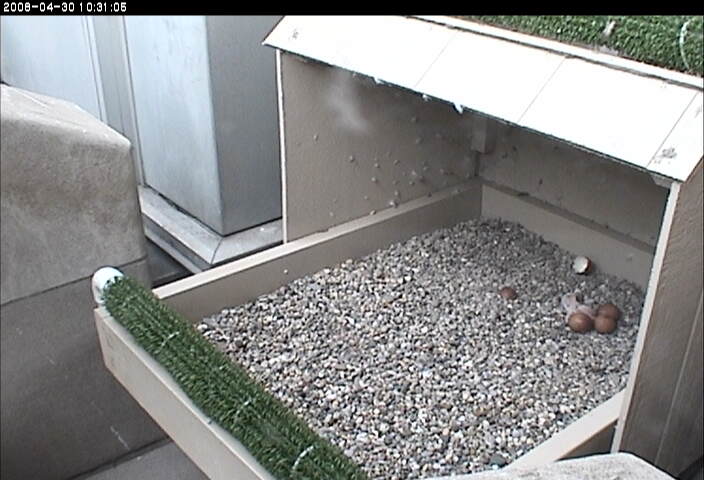
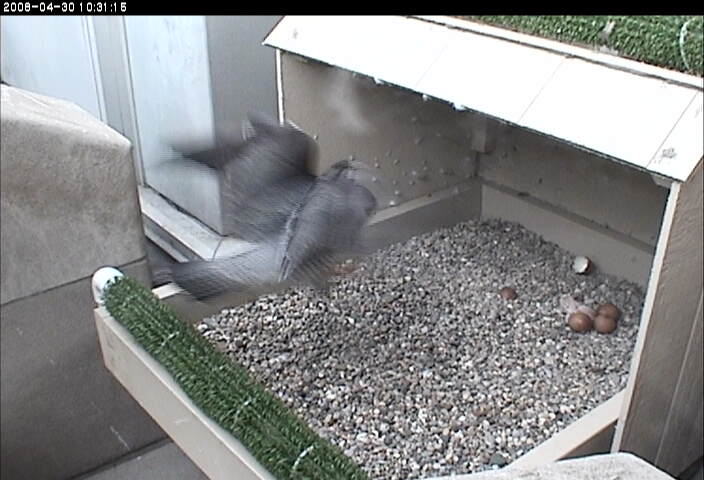
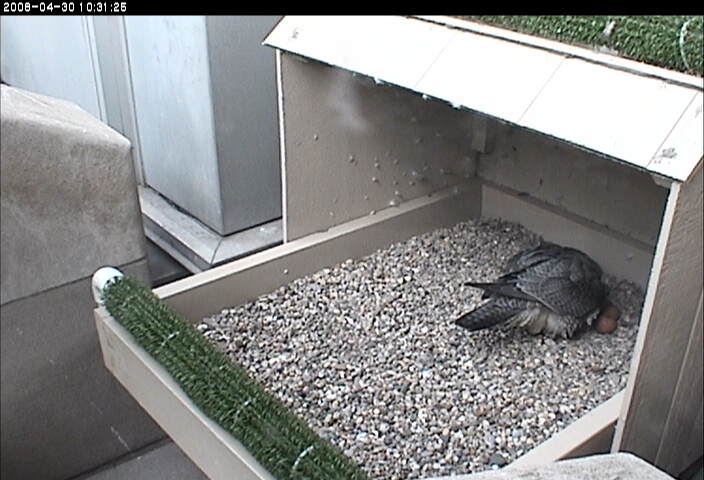

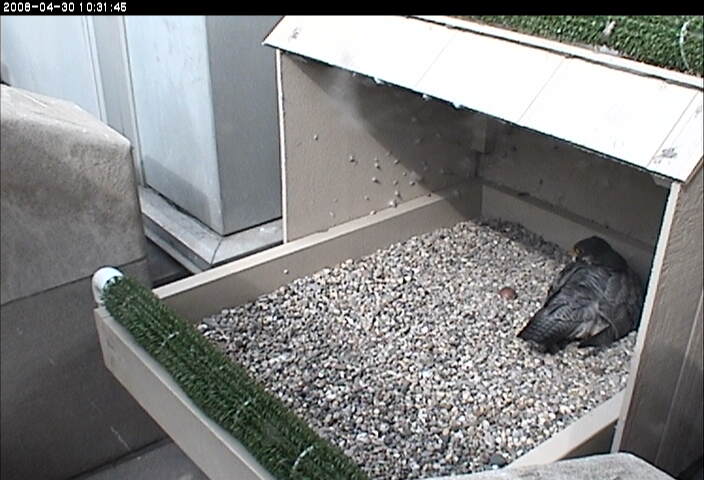
WOW! Today is definately a busy day at the Pitt nest with three eggs hatching on the same day. Talk about an instant family! LOL!
Today, I spot 2 of the eggs pushed out to the side, in the Cathedral of Learning nest. Looks like Dorothy thinks they are no longer viable. How does a peregrine (or any bird) know this?
Looking at the webcam again later, I realize that those are pieces of eggs, not whole eggs. And I see Kate has written that THREE have hatched. So exciting. I did see an item about this on Channel 4 this morning.
How do the peregrines in Oakland interact with the red tailed hawks? I watch the hawks out my window at Carnegie Mellon.
As some of you have noticed, Dorothy pushes the eggshells aside after the chicks have hatched.
Regarding viability: Birds with non-viable eggs – such as the two non-viable eggs at Gulf Tower – continue to treat them as if they’ll hatch until it is long beyond hatch time. The bird eventually stops incubating and gives up. I think the extra time is biological “insurance” so that viable but late eggs are not accidentally abandoned.
Regarding the red-tails: E2 doesn’t like them. I wrote about him attacking them in one of my first blogs http://www.birdsoutsidemywindow.org/2007/11/20/clash-of-the-titans/. That was back when I didn’t realize that Erie, the previous male peregrine at Pitt, had been replaced by E2 so I mention “Erie” in the blog. In fact, Erie tolerated red-tails unless they approached the Cathedral of Learning so E2’s dislike of them is one of the things that made me notice that something new was going on. I discuss this in my blog about E2:
http://www.birdsoutsidemywindow.org/2008/04/02/who-is-he-new-male-peregrine-at-univ-of-pittsburgh/
I like those two fotos that Barbara Simon captured. Do we know what the food is that Louie has in his beak? Just curious.
John B.
We don’t know what food is in his beak but it is 99% certain it’s a dead bird as that is what peregrines eat.
Tasha 2’s chicks seem to be alone often, while Dorothy’s chicks are usually with a parent. Does this mean that Tasha 2 must do much of her own hunting? Or, does the ages of the bigger chicks mean that they can be left alone for longer periods of time?
And, yes, watching these webcams can become addicting!
Tasha’s chicks are about 10 days older than Dorothy’s. When the chicks are about 7-8 days old, they don’t need to be brooded any more (kept warm). At this stage, one of the parents usually perches nearby to guard them but doesn’t need to be on them. At this point you won’t see the adult in the camera. The field of view is amazingly small for a peregrine’s universe.